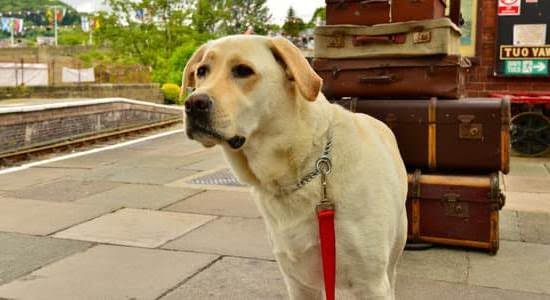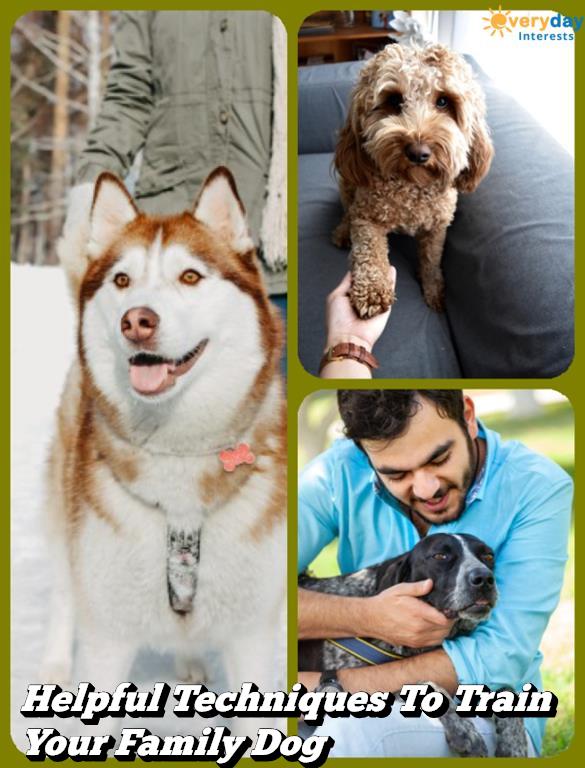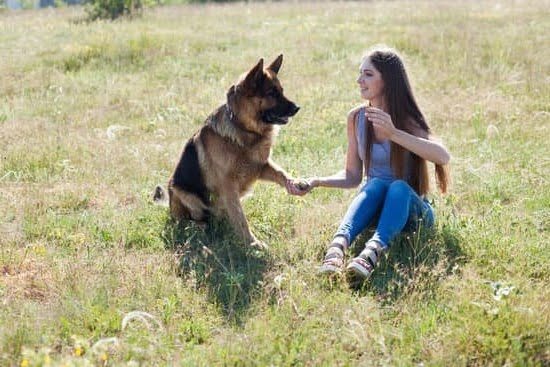Introduction
Owning a family guard dog is suitable for many households, and can be an incredibly rewarding experience. A well-trained guard dog serves as an additional layer of security to your home, protecting you and your family from potential intruders or other dangerous situations. It is important that your guard dog is trained properly so they know how to react appropriately in certain scenarios; this will help keep them and your family safe when needed. Before committing to owning a guard dog, it is essential to weigh out the pros and cons as training requires dedication and responsibility.
When taking on a family guard dog, it’s critical to understand the level of commitment that comes with that responsibility. Training should start from day one: establishing trust with the dog, reinforcing basic obedience commands like sit, stay, heel and come are essential for any pet owner. Further, housebreaking needs to become second nature immediately; young dogs need frequent supervised potty time until they understand their routine. Additionally, some working breeds require mental stimulation such as agility courses or problem-solving toys; too much energy can lead to unwanted behaviors like destructiveness or excessive barking.
Establishing a reliable bond between you and your pup is crucial in generalizing good behaviors around strangers and in unfamiliar environments. Socializing with other people (especially those who do not live in the household) should be done gradually outside of the home environment while providing positive reinforcement whenever possible; proper socialization will help prevent fear-based responses toward unknown faces if an intruder ever were to break into the home. As most guard dogs serve protectors of immense loyalty, introducing defensive maneuvers like barking or growling are recommended but must be very carefully managed so aggression is never presented unsuitable scenarios — the goal being to keep both the canine’s safety and overall effectiveness at no risk of harm!
Choosing the Right Breed of Dog
When it comes to training a family guard dog, selecting the right breed of dog is incredibly important. In general, larger breeds such as Mastiffs, German Shepherds, and Dobermans tend to make excellent guard dogs. These breeds are naturally protective of their family and loyal guardians for the home. Other breeds such as Rottweilers and Chows are also popular choices because of their assertive dispositions and territorial nature.
When looking for an ideal guard dog, look for specific characteristics that indicate they may be a good fit. Guard dogs should be alert but submissive — they should bark or growl at strangers while being responsive to commands from owners. The temperament of the dog should be confident but not aggressive — they should remain neutral towards other people and animals when not provoked in any way. Trainability is essential — an ideal guard dog breed should want to please its owner by learning commands quickly and effectively following them even when off-leash. Finally, endurance is important for any guard dog so look for signs of high stamina in order to ensure that the animal can keep up with long walks and outdoor play time with your family.
Training and Housebreaking
Housebreaking a family guard dog can seem daunting, but with a little bit of patience and consistency, it can be done. Before attempting to train the dog for guarding duties, it is important to ensure that all basic obedience commands have been mastered first, as this will help make the training process much smoother. When housebreaking your pup, there are a few key strategies to keep in mind.
Initially, you should create routines and stick to them as closely as possible—this includes regular times for meals or treats, bathroom and exercise breaks, and even naps or activity time. Use designated areas for pottying and remember to give your pup lots of praise when they successfully ‘go’ outside; when an accident happens inside, don’t scold them but instead prevent future occurrences by using more regularly-spaced potty breaks. Additionally, crate training is a highly effective tool for housebreaking—have your pup spend some quiet time in their crate so that they become familiar with it before associating it with negative tasks like confinement during accidents or punishment.
Once housebreaking is complete, additional training steps can begin. It’s important to establish clear rules and boundaries with your puppy—for instance, where and when he/she can go in the home —but also be consistent and continue praising them every time they excel at obeying these rules. Establish commands they must respond to each time using verbal cues such as ‘sit’ or ‘stay’ alongside physical movements paired with those same words in order to achieve maximum success through repetition. Finally, remember that consistency really is key; if your pup doesn’t understand right away what you want from them repeat training exercises until they do!
Establishing Rules
Before taking any steps towards training your family guard dog it is important to set boundaries and guidelines. Make sure everyone is aware of the rules regarding the dog’s behavior and that each member of the family agrees to follow them. Young children should be especially monitored when interacting with the dog, as they may not be aware of their own actions. Set a specific area for the dog to rest and clearly explain what it can and cannot do. Establishing rewards and consequences for its behavior is also an important part of establishing rules. Lastly, consistently enforce these boundaries to ensure that your guard dog knows what is expected from them.
Socialization
Socializing your dog is an important step when training a family guard dog. Start by introducing your pet to close friends, family members, and neighbors. Make sure you allow the puppy or adult dog to interact with people of all ages, sizes, and genders. You should also slowly introduce them to other animals such as cats and dogs (if applicable). This allows the dog to become familiar with new faces and animals in a safe and supervised setting. Hold short play-dates in your home or local park where everyone can meet on neutral ground. Invite people to come over from time to time so your pup can get used to seeing different kinds of visitors in their home environment. When going out for walks and runs, take the time to observe how they react around new people and animals while being praised at all times. Doing so will help strengthen your bond while helping the pet become more confident with strangers.
Interesting Activities
In order to effectively train a family guard dog, it’s important to provide them with stimulating mental and physical exercises. A bored guard dog can often become destructive, so regular activity is essential for their overall development. Some activities to consider include games of fetch, obstacle courses, and nosework challenges. Workers like hide-and-seek that require the pup to find hidden objects throughout the home or yard will help increase their problem solving capabilities and alertness. Dog sports such as agility are also great for helping bond families together as well as teaching obedience in an entertaining environment. Playful tug-of-war is an excellent way to improve communication between you and your pet. Teaching commands such as “sit”, “stay”, or “watch me” while making it fun will help keep them focused on what you want them to do while they’re protecting the family. Have regular playtime outdoors and socialize your pup by visiting with friends who have other well-behaved dogs. Be sure to reward both successes and effort each step of the way in order to build trust so that they can better serve as guardians of your home and family!
Maintenance
In order to have a healthy, strong family guard dog, providing a nutritious environment is essential. Ensure that your pup has plenty of access to clean drinking water and high-quality food. A diet suitable for a guard dog should be balanced in proteins and carbohydrates to provide adequate nutrition and energy reserves. Furthermore, feeding him at regular times can help keep the hunger signals in check. Make sure your pup is regularly dewormed to protect against parasites. Additionally, taking your dog for regular veterinary visits is important to detect potential issues early on and maintain his wellbeing overall. Exercise and mental stimulation are also quite important for any canine companion; look into daily activity suggestions depending on age and breed as well as ways of engaging him mentally so as not to leave him bored or overwhelmed by his guarding duties.
Common but Dangerous Behaviors
Preventing dangerous situations is the key to ensuring your family guard dog does not become a danger. Training your dog early on to be aware of possible dangerous encounters can go a long way in eliminating risks down the road. Start by helping your pup learn what behaviors are considered appropriate and which are unacceptable. It is important to set your pup up for success from the beginning by teaching it exactly what you expect from it in any situation. Practicing basic commands such as “sit”, “stay”, “down”, “stop”, and “come” as well as proper leash etiquette will help create clear boundaries between acceptable and potentially hazardous behavior.
Socialization is also an important part of training your family guard dog, as it will learn how to appropriately interact with other animals, people and objects. Take your pup out on regular social-walking trips or have friends come over so that he or she can become comfortable with different scenarios including large crowds and fast paced environments. Introducing new smells and unfamiliar sights helps your pup get used to the world around them with more ease, creating less risk for aggressive reactions in unknown areas. Additionally, providing guidance with what sounds are allowed versus those which must be silenced can reduce the chance that barking turns into aggressive growling or lunging at strangers or passersby. Familiarizing yourself with breed-specific behaviors is necessary when selecting a breed to serve as a guard dog as they should fit comfortably within whatever environment they will inhabit while providing appropriate protection when called upon
Behavior Modification
Behavior modification is an essential step in training a family guard dog. It involves managing and changing the dog’s behavior through positive reinforcement and also correcting any unacceptable behaviors. Positive reinforcement should be used to reward desirable behaviors such as responding to commands, restraining barking, and standing still when requested. Negative reinforcement can also be used to address undesirable behaviors such as aggressive behavior, destructive chewing, bowel movements inside the house and so on. The goal of this step is to teach your family guard dog how to behave in certain situations so they are a reliable protector for your household.
An important part of this process is understanding why the dog is displaying negative behaviors before addressing them. There could be several reasons behind it ranging from fear or anxiety to boredom or loneliness. Watching your companion carefully can help determine the root cause of their behavior and provide insight on how best to approach correcting it. Make sure never to jump straight into discipline without first taking the time to establish why the misbehavior was happening in the first place.
Once the underlying causes have been addressed, the next step is for owners to determine which techniques should be most effective for teaching acceptable behavior or correcting unwanted kinds with their particular pet. This may include traditional training techniques like verbal corrections, hand signals or leashing as well as more modern devices like bark collars or electronic containment systems that provide corrective feedback following unwanted responses from the dog. Consistent use of these various devices will encourage desired responses within your family guard dog over time thus making you more confident that they are reliably protective when needed while still being friendly when appropriate.
Conclusion
The benefits of owning a guard dog are numerous. Not only will they provide an extra level of protection for your family, but adopting or buying a guard dog can also offer companionship and provide an emotionally fulfilling experience for the whole household. Guard dogs also act as an important extension of familial love by nurturing and providing support when needed in times of crisis or danger.
However, with such a tremendous responsibility comes the need for excellent pet ownership. When training a family guard dog it is important to invest time into socializing your pet so that it can respond well to any situations that may arise. It’s equally important to ensure that the dog is provided with proper nutrition and exercise, as well as adequate living space. Following these steps will help create not only a loyal companion, but one which brings protection, support, and peace of mind to their human family.

Welcome to the blog! I am a professional dog trainer and have been working with dogs for many years. In this blog, I will be discussing various topics related to dog training, including tips, tricks, and advice. I hope you find this information helpful and informative. Thanks for reading!





